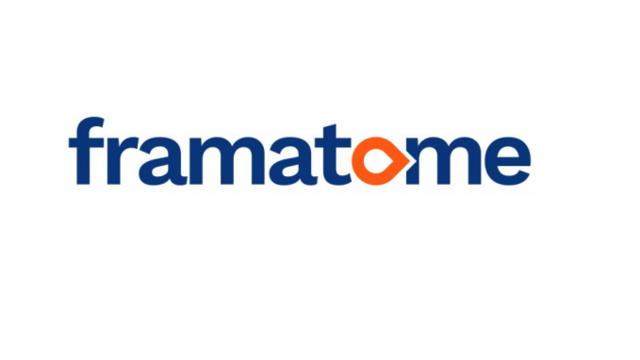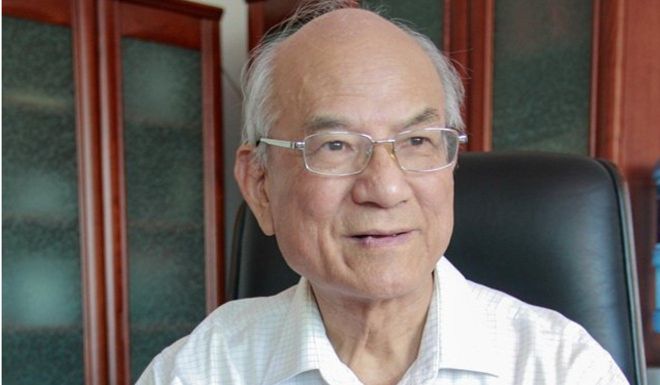Blog
-

Nuclear Reactors 651 – Framatome Is Developing Chromium-Clad Enhanced Accident Fault Tolerant Nuclear Fuel Under U.S. DoE grant
Framatome is a French company that manufactures nuclear reactors and nuclear reactor fuel. It was created in 2018 when Areva, another French company, went bankrupt. Seventy five percent is owned by EDF, the French utility company. Twenty percent is owned by Mitsubishi Heavy Industry, a Japanese company, and five percent is owned by Assystem, an international engineering services firm.
Framatome has just received a forty-nine million dollar grant from the U.S. Department of Energy (DoE) for a twenty eight month project. The purpose of the grant is to accelerate the development and commercial production of enhanced accident tolerant fuel (EATF) for nuclear power reactors. The new grant will allow Framatome to continue work that was begun with a ten-million dollar grant from DoE in 2016. EATFs are being created to improve normal performance in nuclear reactors and to give nuclear plant operators more time to deal with the loss of active cooling in reactors.
Framatome is working on EATF for all types of nuclear power reactors. In the near term, Framatome is experimenting with the use of chromium in nuclear fuel assemblies. Chromium can be used to coat fuel pellets in fuel rods or to clad the entire fuel rod. These new fuel designs should improve fuel efficiency and give operators more flexibility.
Adding chromium to the existing cladding alloys use in nuclear fuel assemblies provides a number of advantages over existing nuclear fuels such as improved resistance to oxidation at high temperatures, the reduction of hydrogen gas generation caused by accidents and increased resistance to wear and debris production in normal operation.
Framatome has been developing chromium cladding for nuclear fuel for several years as part of the DoE’s EATF program. It was announced in July of 2017 that chromium clad fuel pellets and fuel rods would be loaded into the Unit 2 reactor at the Vogtle nuclear power plant in Georgia for testing early in 2018.
In the long term, Framatome will develop the use of silicon-carbide based cladding for nuclear fuel assemblies. It is hoped that silicon-carbide cladding will offer even more improvements than chromium cladding.
Bob Freeman is the vice president of Contracts and Services for Framatome Fuel Commercial and Customer Center in North America. He said, “EATF designs represent the next evolution in technologies that will support today’s and tomorrow’s nuclear reactors and unlock value in Framatome’s
products and the existing nuclear fleet. With the support of DOE, Congress and our industry partners, we are ahead of schedule in making this fuel technology available to nuclear power plants so that they can continue to provide clean, efficient electricity.”
Framatome is one of three companies working with DoE to commercialize EATF. The other two companies are Global Nuclear Fuel (GNF) and Westinghouse. The DoE accident tolerant fuels project was launched in response to the Fukushima nuclear disaster in 2011. The DoE intends to test EATFs in a commercial power reactor by 2022. The DoE is following an accelerated timetable in order to have EATFs available by 2025 for use in the current fleet of commercial nuclear power reactors, many of which are licensed to operate into the 2030s. -

Geiger Readings for Jan 16, 2019
Ambient office = 134 nanosieverts per hour
Ambient outside = 156 nanosieverts per hour
Soil exposed to rain water = 152 nanosieverts per hour
Cauliflower from Central Market = 158 nanosieverts per hour
Tap water = 120 nanosieverts per hour
Filter water = 105 nanosieverts per hour
-

Nuclear Reactors 650 – The Consortium for Advanced Simulation of Light Water Reactors Is Developing The Virtual Environment for Reactor Applications
Most of the nuclear power reactors in the U.S. were built in the 1970s and 1980s. They were licensed for forty years and many have reached that age or will reach it soon. Some operators have applied for permits to operate their reactors for an additional twenty years and most of these applications have been granted. Materials used to build nuclear reactors age and deteriorate over time. The big question that needs to be answered is whether or not it is safe to continue operating reactors well past their original licensed lifespan.
The Consortium for Advanced Simulation of Light Water Reactors (or CASL, for short) was created during the Obama administration to help extend the life of nuclear power reactors. It is funded by the U.S. Department of Energy (DoE). CASL has been working on the creation and refinement of a reactor modeling program they call Virtual Environment for Reactor Applications (VERA).
VERA provides a high-resolution computer model of nuclear reactor equipment. It can simulate safety concerns, reactor startups, and fuel-rod behavior, and other processes, equipment and materials. David Kropaczek is the director of CASL. He says that it might be possible to extends commercial power reactor operations to one hundred years but only if we understand how extended lifespans would affect the materials in the reactor. VERA appears to be able to accurately show how reactor materials age.
It is hoped that VERA will enable nuclear power plant operators to do away with some of the extreme conservatism which was applied in the construction of old nuclear power reactors. By using VERA, plant operators should be able to identify which reactor components need to be replaced in order to keep the reactor in operation safely.
The development of VERA was supported by real-world data from private companies including Westinghouse which designs reactors and distributes nuclear fuel, the Tennessee Valley Authority and the Electric Power Research Institute.
Another application for VERA will be to model the affect of grid demand changes on nuclear reactors. When the full output of a reactor is not needed, some reactors can have their output turned down which is called load-following. This stresses the nuclear fuel and there is a question of exactly how much this stress can damage the fuel. As long as the stress can be minimized, more load-following could be available.
Kropaczek says “Nuclear power plants need to be boring with respect to operations, with respect to the fuel. I don’t want to see any surprises—that’s the goal of a plant: nothing happens. Load-following is no longer steady state and boring. We need to go from 100 percent to 50 percent power and back again. So you’re worried about the fuel and stresses on the fuel and things are changing. VERA can actually… model fuel behavior for load-follow, [reporting] what the fueling is going to do and what is the fuel operating level?… We can look at every fuel rod, every fuel pellet in the core; we can look at those stresses in the fuel.”
CASL is working on making VERA available to many U.S. utilities. They are installing VERA on a one thousand core computing cluster at the Idaho National Laboratory this month. They will be training twenty-four people from twelve different nuclear power companies.
The use of VERA should allow existing nuclear reactors to be operated safely for longer periods of time that their original licenses permit. Hopefully, this will allow extra time for the development of advanced nuclear reactors and economical renewable energy installations. -

Geiger Readings for Jan 15, 2019
Ambient office = 121 nanosieverts per hour
Ambient outside = 116 nanosieverts per hour
Soil exposed to rain water = 116 nanosieverts per hour
Orange bell pepper from Central Market = 108 nanosieverts per hour
Tap water = 97 nanosieverts per hour
Filter water = 91 nanosieverts per hour
-

Nuclear Weapons 370 – China Constructs Underground Steel Great Wall To Protect Retaliatory Capability
China has a nuclear policy that says that it will not be the first to use nuclear weapons in a conflict with other nations. However, their policy also says that the Chinese nuclear capability must be able to survive a nuclear attack and retaliate against an enemy.
Qian Qihu is affiliated with both the Chinese Academy of Sciences and the Chinese Academy of Engineering. He recently received the 2018 State Preeminent Science and Technology Award which is the highest Chinese defense award. The award was presented to Qian by President Xi Jinping in the Great Hall of the People in Beijing last Thursday. The award included a cash prized of about one million two hundred thousand dollars.
In a recent interview, Qian spoke about China’s “Underground Steel Great Wall.” He said that this Great Wall could guarantee the security of China’s nuclear arsenal against a nuclear attack including being hit with the new generation of hypersonic weapons under development.
The Underground Steel Great Wall is a series of defense facilities buried deep under mountains in China. The facilities are protected from nuclear attacks by the mountains above them. However, the entrances and exits from these facilities are more vulnerable than the facilities themselves. Qian’s expertise was enlisted to provide more protection from those entrances and exits.
China has a strategic missile interception system, anti-missile systems and air defense systems. If all of these defenses fail in an attack by hypersonic weapons, the Underground Steel Great Wall will still protect the underground facilities.
Qian said, “The development of the shield must closely follow the development of spears. Our defense engineering has evolved in a timely manner as attack weapons pose new challenges.” Hypersonic weapons can travel at up to ten times the speed of sound. They are capable of penetrating any existing missile defense system.
Qian says that “National defense challenges do not only emerge from the development of advanced attack weapons but are also a result of an unpredictable international environment.” He mentioned the fact that the Trump Administration in the U.S. is considering lowering the threshold for deploying nuclear weapons.
Qian was asked by an interviewer how he would spend the award. He said that he would contribute part of the award to national defense research and would give the rest to social welfare projects such as supporting poor students and fighting poverty. He also said, “I have never had a thought of earning any prize money for my research, nor would I think it came too late. I am only grateful that national recognition offers a great opportunity to raise the public’s national defense awareness.”
A Chinese military expert and television commentator said that Qian’s work guaranteed the safety of China’s strategic nuclear weapons, launch and storage facilities. The nation’s military commanders would also be protected by the Underground Steel Great Wall in case of a nuclear attack.
While it is certainly possible that burying facilities under mountains could protect them from a nuclear attack, there are special munitions being developed specifically to penetrate deep into the ground to attack such facilities. And even if the facilities themselves are protected, it is difficult to imagine exactly how exits and entrances could be made invulnerable to attack. -

Geiger Readings for Jan 14, 2019
Ambient office = 100 nanosieverts per hour
Ambient outside = 154 nanosieverts per hour
Soil exposed to rain water = 154 nanosieverts per hour
Yukon Gold potato from Central Market = 66 nanosieverts per hour
Tap water = 71 nanosieverts per hour
Filter water = 66 nanosieverts per hour
